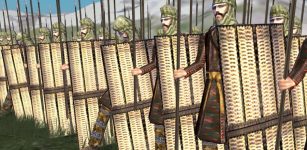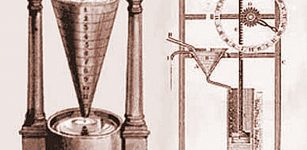Rare Medieval Chess Piece And Game Collection Unearthed At A Forgotten Castle
Conny Waters - AncientPages.com - Over a millennium ago, the chess game was brought from the Orient to Europe, and chess pieces from those early days are exceptionally rare. However, a remarkable archaeological discovery was made during excavations at a forgotten castle in southern Germany (Baden-Württemberg, Reutlingen district), where an almost 1,000-year-old collection of games was unearthed, including a well-preserved chessman, gaming pieces, and dice.
Chess piece, game piece and dice from the 11th/12th century. Credit: University of Tübingen
Detailed laboratory analyses conducted by an international team of experts from the University of Tübingen, the State Office for the Preservation of Monuments Baden-Württemberg (LAD), and the German Archaeological Institute (DAI) revealed fascinating insights. One key finding was that one party played with red pieces, shedding light on the game's historical traditions.
Furthermore, the analysis of the findings promises to provide valuable insights into the gaming world of the medieval nobility and the origins of the European chess game. Remarkably, typical wear patterns on the knight piece indicate that it was lifted during moves, just as today, suggesting an astonishing continuity in the game's rules over the centuries.
"In the Middle Ages, chess was one of the seven skills that a good knight should master. It is therefore not surprising that known finds mostly come from castles," explained Dr Jonathan Scheschkewitz (LAD). "The discovery of an entire games collection the 11th/12th century came as a complete surprise to us, and the horse-shaped knight piece is a real highlight," said Dr Lukas Werther (DAI).
Dr. Michael Kienzle explained that these artifacts, including a chess piece, four flower-shaped game pieces, and a six-sided die carved from antlers, were found under the debris of a wall where they had been lost or hidden centuries ago. This covering contributed to the exceptional preservation of their surface details.
According to Dr. Flavia Venditti, also from the University of Tübingen, microscopic examination revealed a distinct sheen on the pieces, indicating frequent handling and movement during gameplay. The 4 cm high horse chess piece, in particular, showcases intricate detailing in its eyes and mane, a hallmark of high-quality craftsmanship from that era.
Residues of red paint found on the flower-shaped pieces are currently undergoing chemical analysis. By conducting a comprehensive study of these finds, researchers aim to gain valuable insights into the gaming culture of medieval nobility and the origins of European chess.
Dr. Michael Kienzle at the University of Tübingen explained that these artifacts, including a chess piece, four flower-shaped game pieces, and a six-sided die carved from antlers, were found under the debris of a wall where they had been lost or hidden centuries ago. This covering contributed to the exceptional preservation of their surface details.
According to Dr. Flavia Venditti from the University of Tübingen, microscopic examination revealed a distinct sheen on the pieces, indicating frequent handling and movement during gameplay. The 4 cm high horse chess piece, in particular, showcases intricate detailing in its eyes and mane, a hallmark of high-quality craftsmanship from that era.
See also: More Archaeology News
Residues of red paint found on the flower-shaped pieces are currently undergoing chemical analysis. By conducting a comprehensive study of these findings, researchers aim to gain valuable insights into the gaming culture of medieval nobility and the origins of European chess.
The finds will be presented to the interested public for the first time in 2024 in the large national exhibition.
Written by Conny Waters - AncientPages.com Staff Writer





















